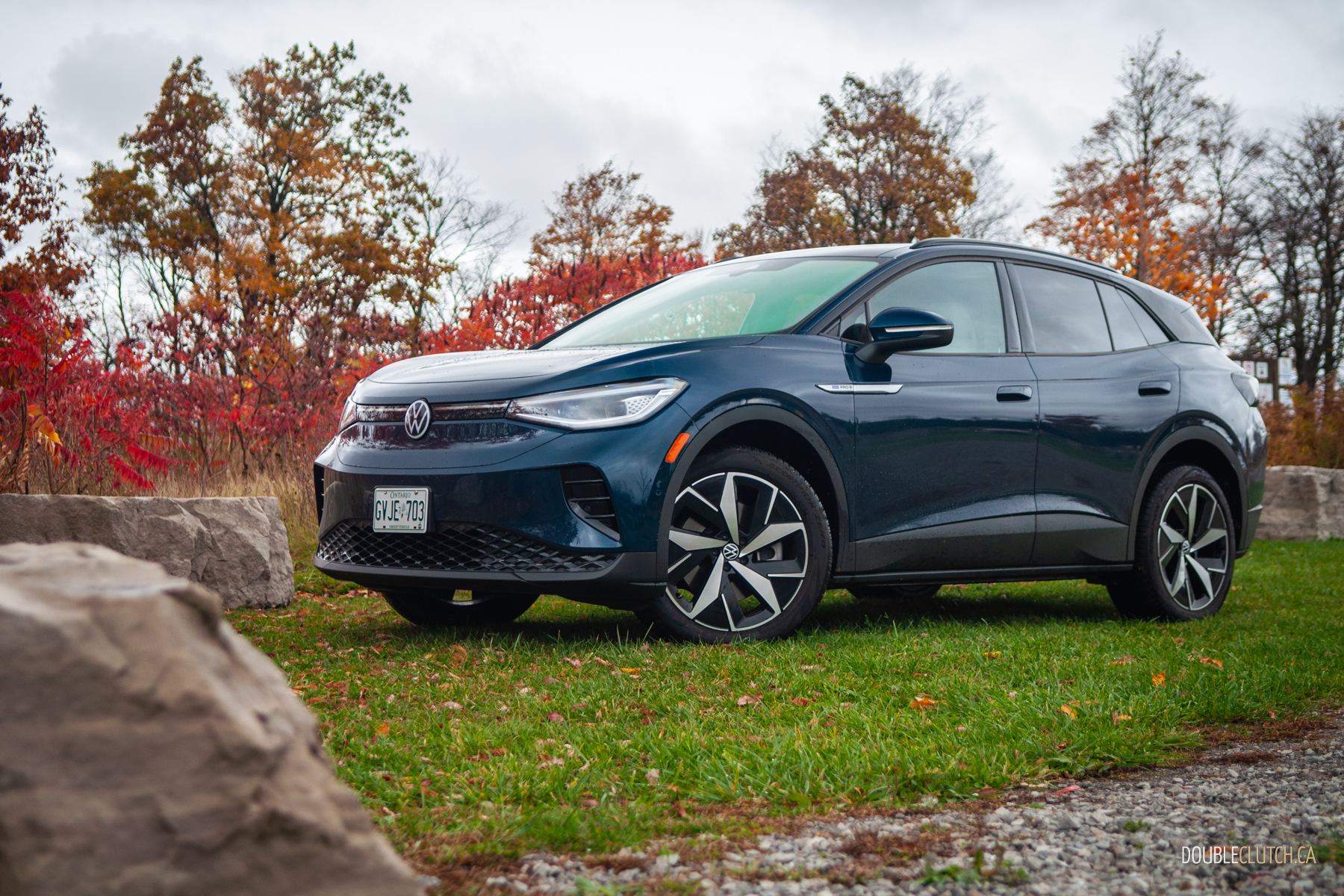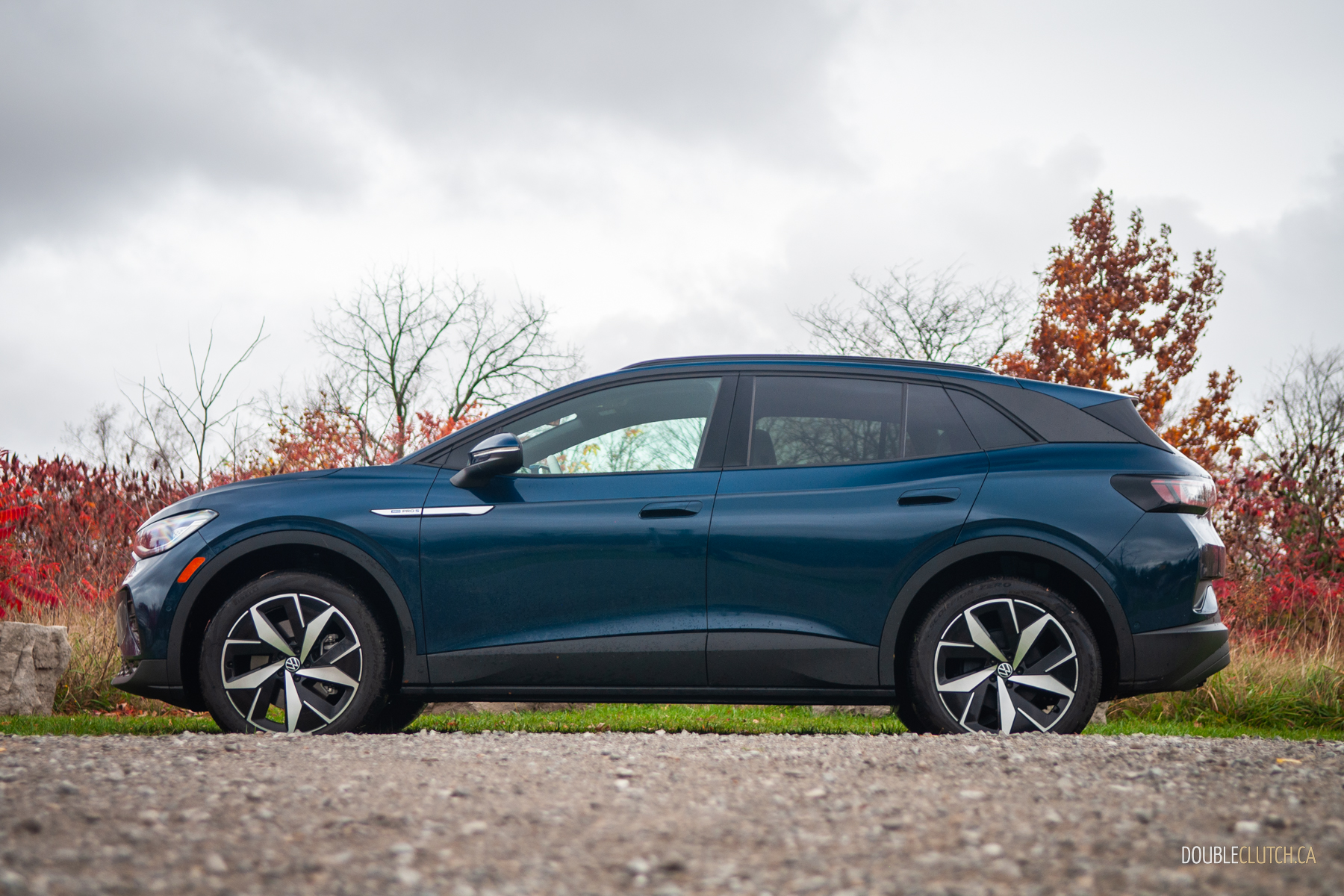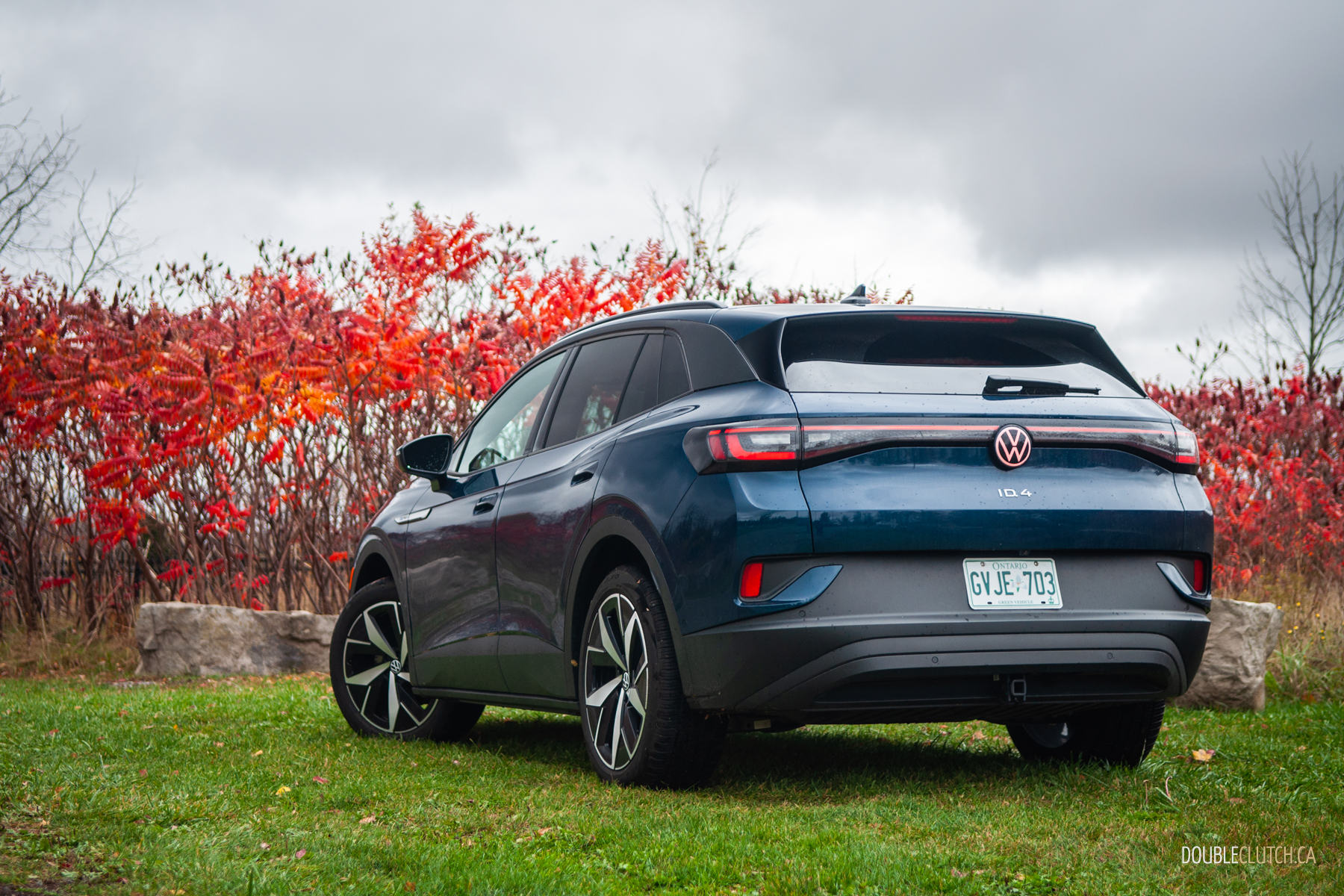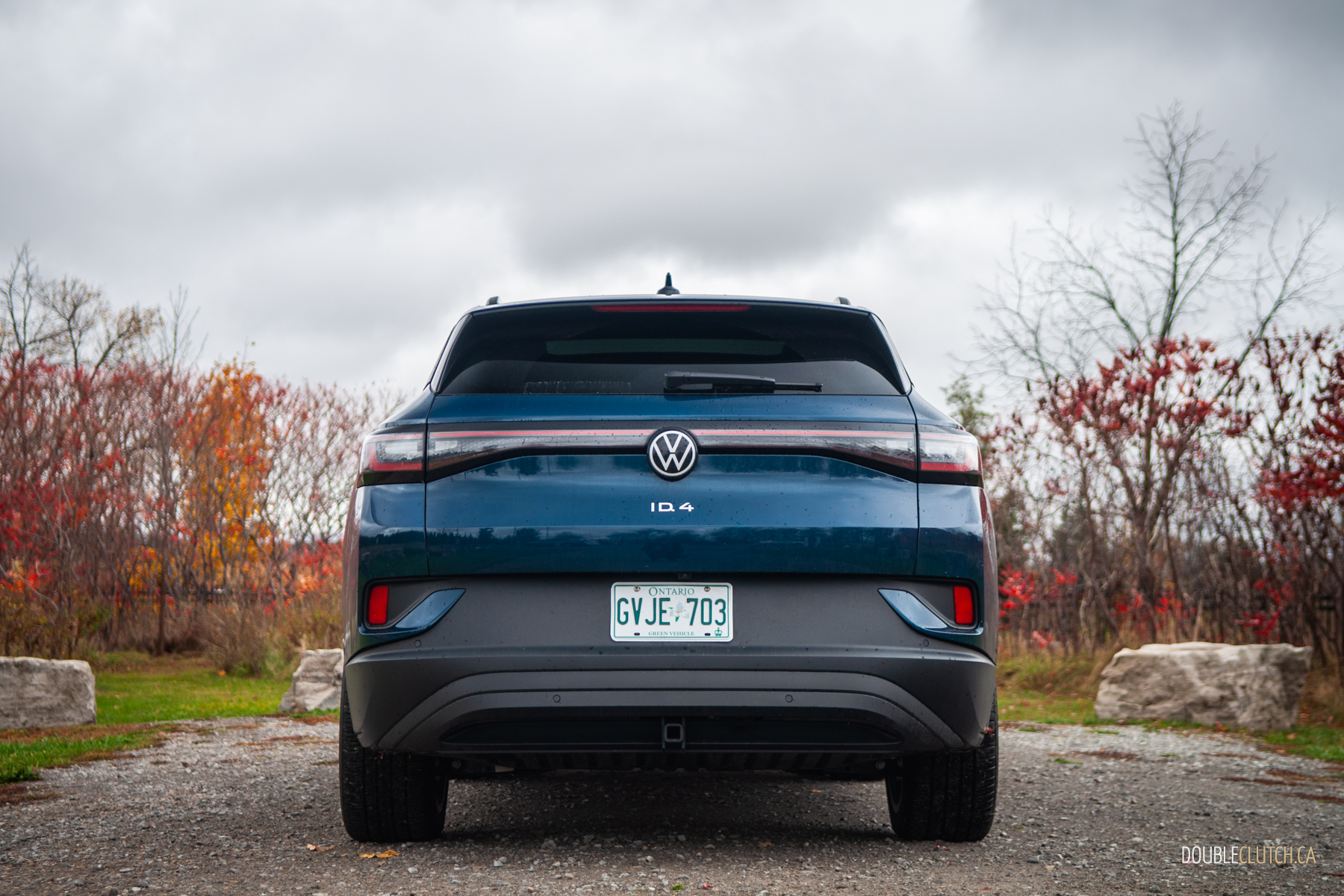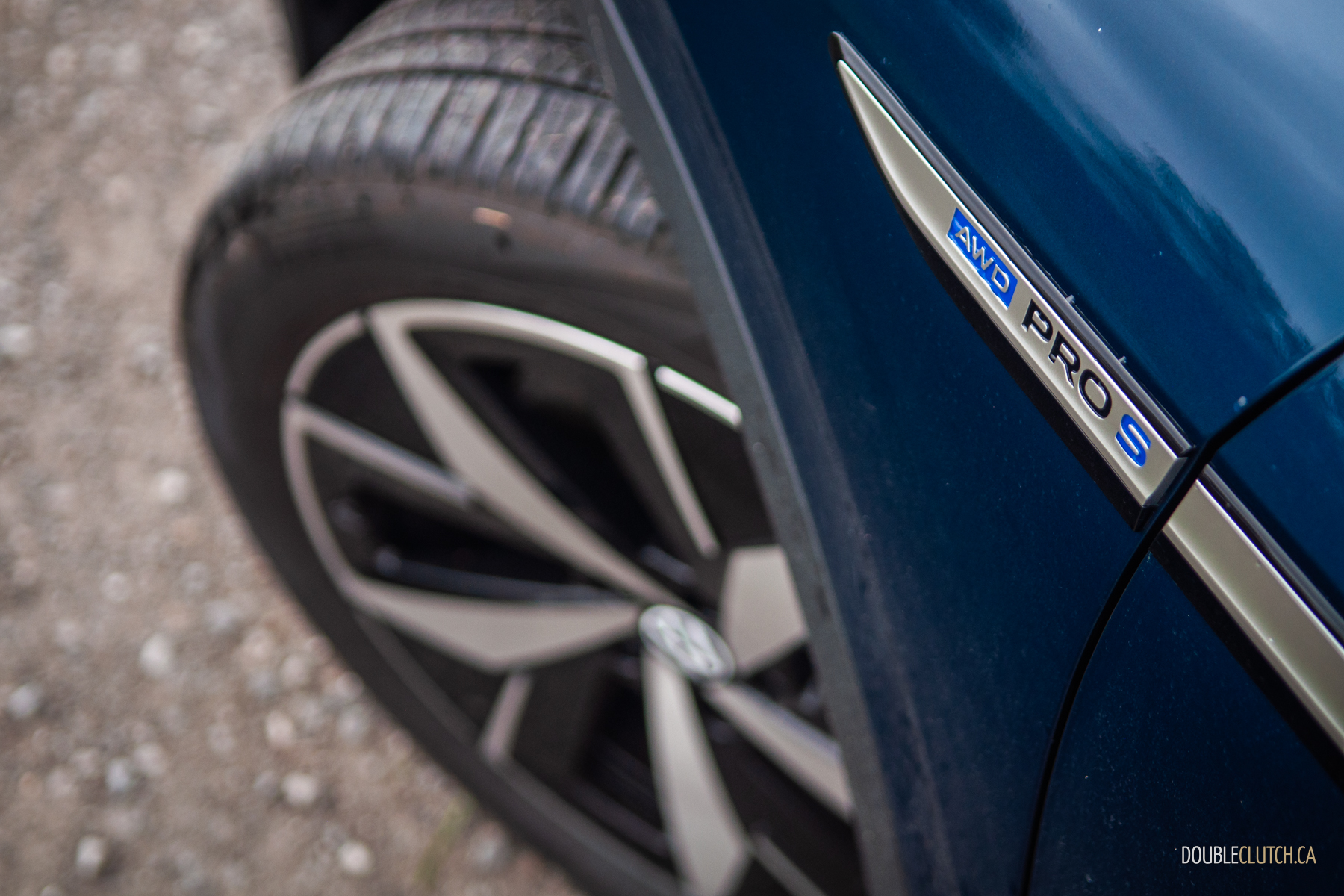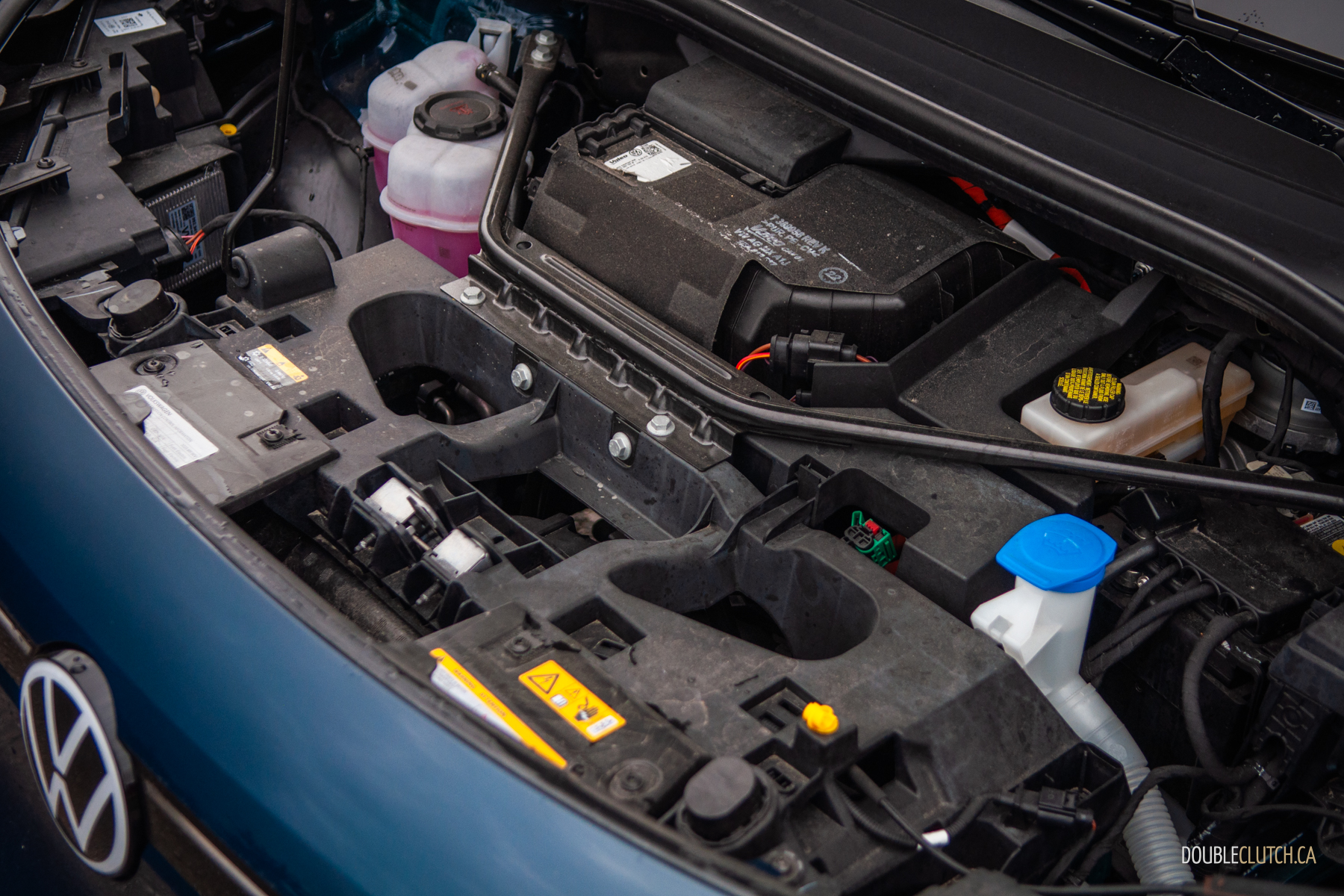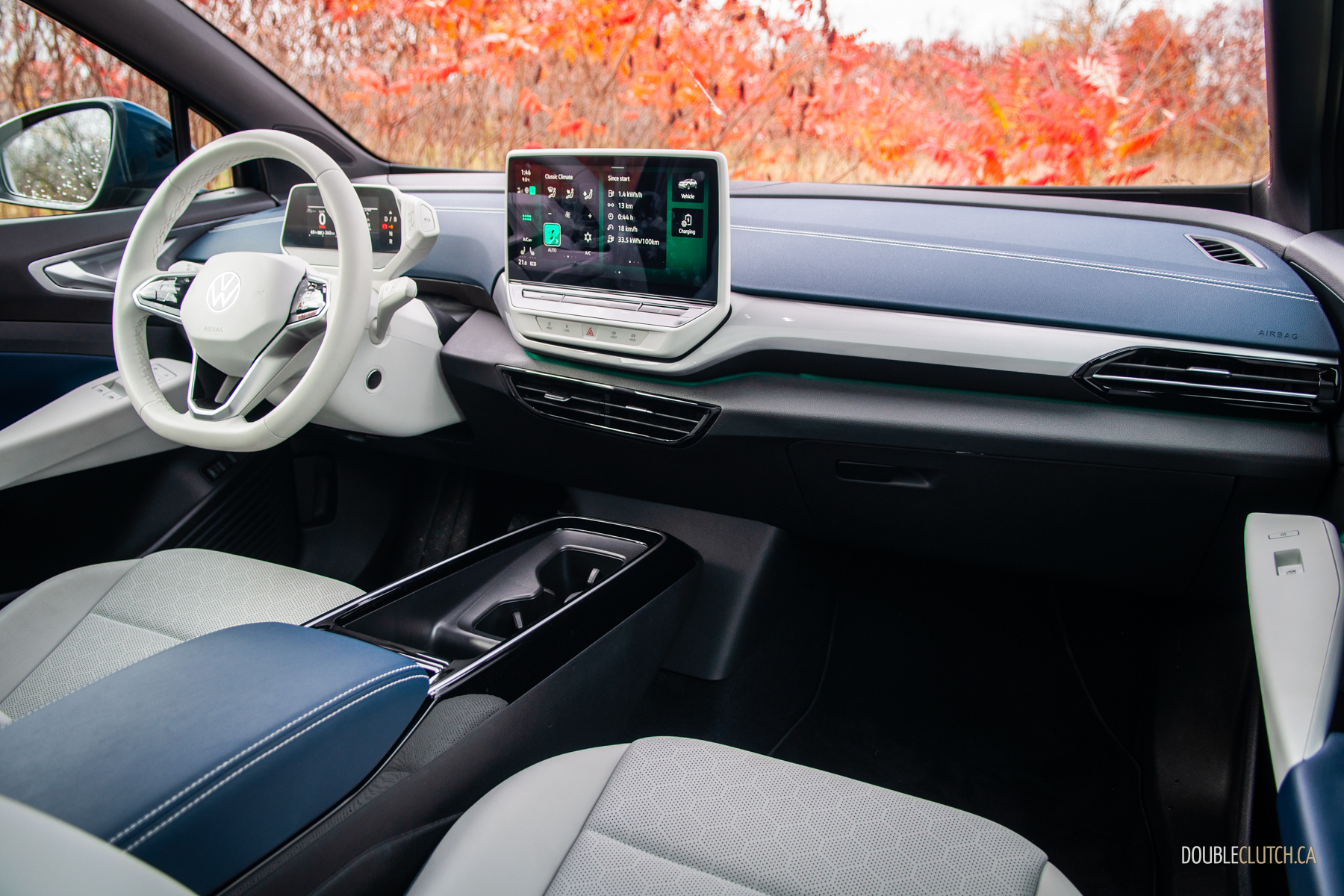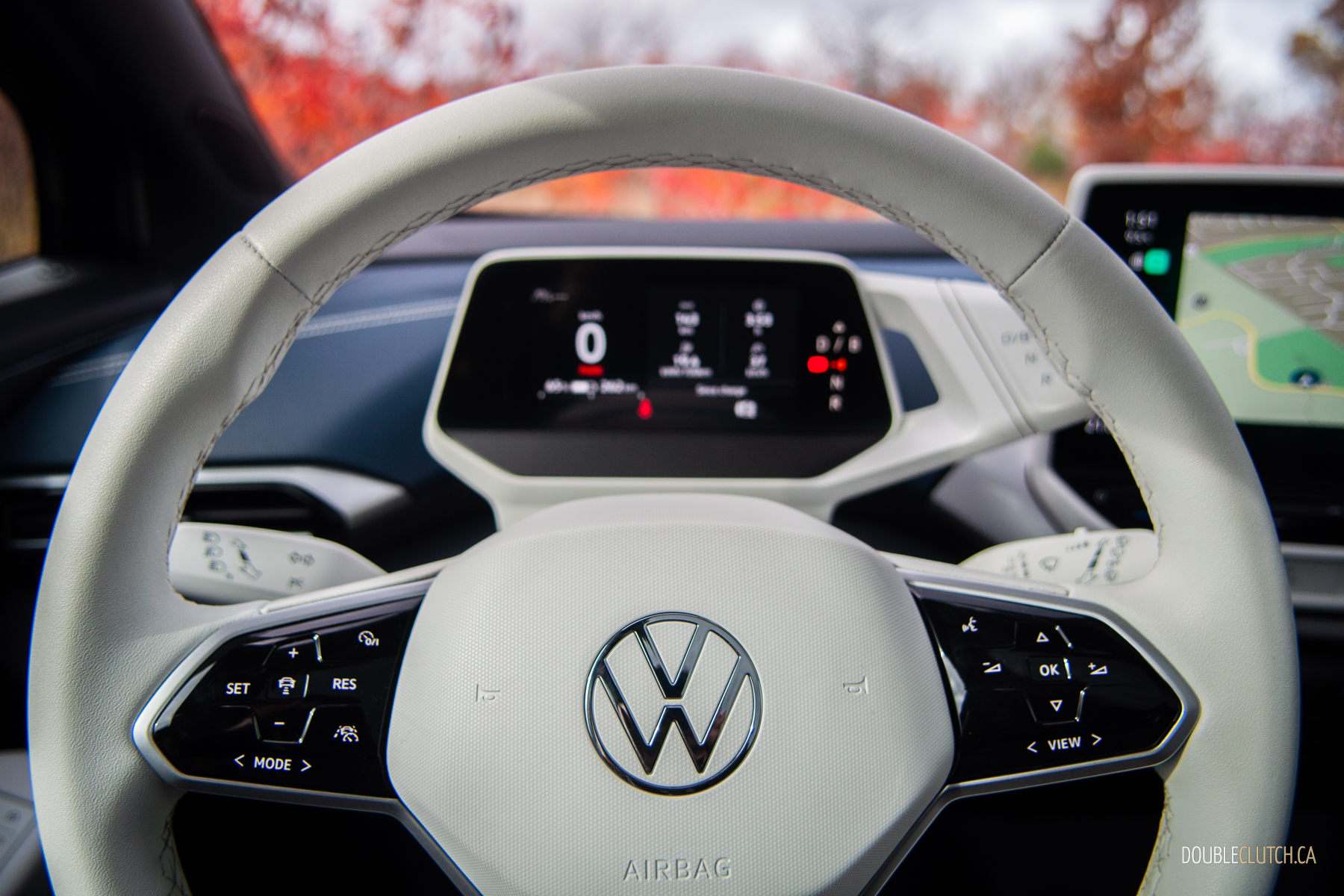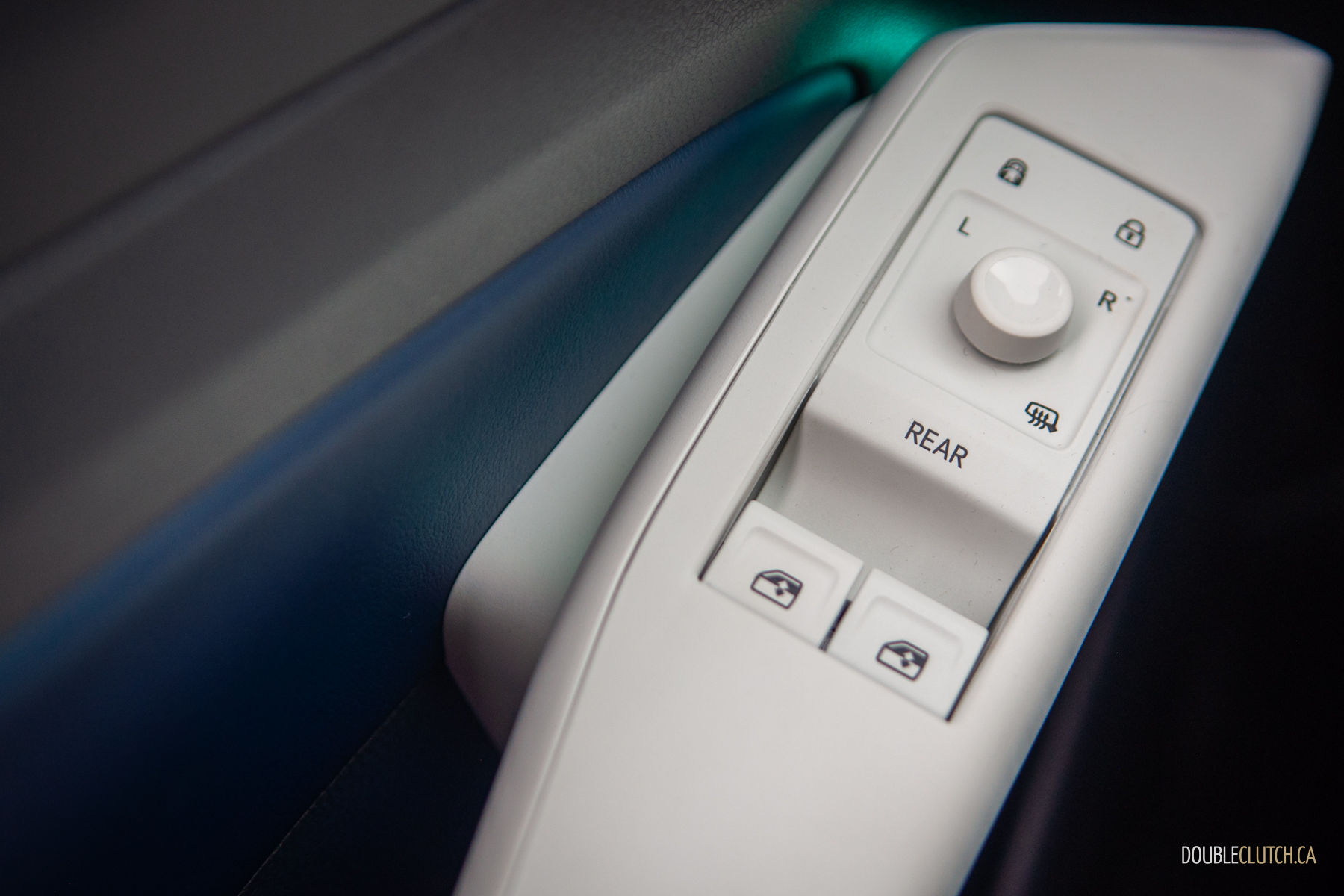With the ID.Buzz generating all the buzz these days — pun intended — you’d be remiss to forget the blob-shaped crossover that kickstarted VW’s electric lineup just two years ago. On top of that, you’re also spoiled for choice in the sub-$60K EV segment, with a slew of competitors from Hyundai, Kia, Subaru, and Toyota flooding the market. So with that in mind, we snagged the keys to a 2023 Volkswagen ID.4 to find out just how well VW’s first mainstream EV has aged.
Technically, the ID.4 isn’t Volkswagen’s first electric vehicle offered in North America per se; that title goes to the e-Golf — although in fairness, it was a compliance car at best. Instead, think of the ID.4 as VW’s first fully baked EV, built atop its own dedicated platform, boasting usable range and styled very differently than anything else in the ineup. It’s your typical blob-shaped, crossover-ish, hatchback-ish thing, but it’s a clean-looking alternative to something more edgy and polarizing, like the Hyundai Ioniq 5 or Kia EV6.
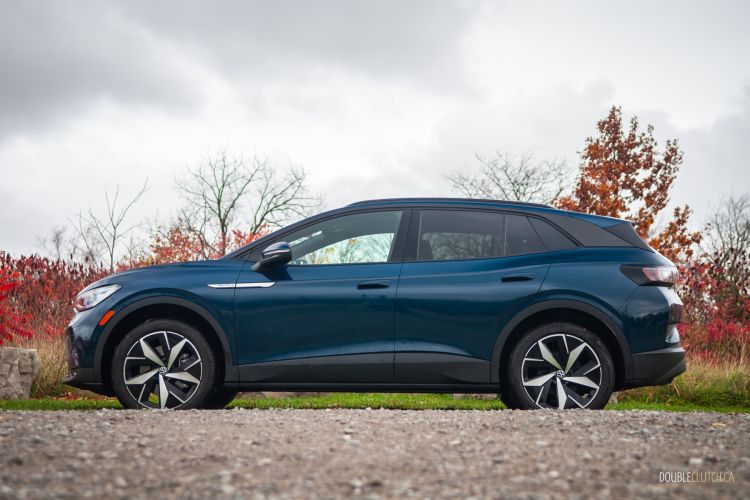
Under the skin, the ID.4 shares a lot with its upbadged near-twin, the Audi Q4 E-Tron. Our particular tester uses two permanent-magnet electric motors — one up front, the other out back — paired to an 82 kWh battery pack. The end result is a healthy 295 horsepower and 332 pound-feet of torque; it doesn’t deliver the kind of gut-punching acceleration we’ve come to expect in other EVs, but it certainly scoots when you bury the skinny pedal in the carpet.
Base ID.4s use a single electric motor on the rear axle and a 62 kWh battery pack, while the mid-trim ID.4 uses the bigger 82 kWh battery but stays RWD. You do get more range with the RWD models — VW quotes up to 443 kilometres, versus 410 for our all-wheel-drive tester — but that comes at the expense of power. RWD models put out up to 204 hp and 229 lb-ft of torque, a not-insignificant dearth compared to our AWD tester.
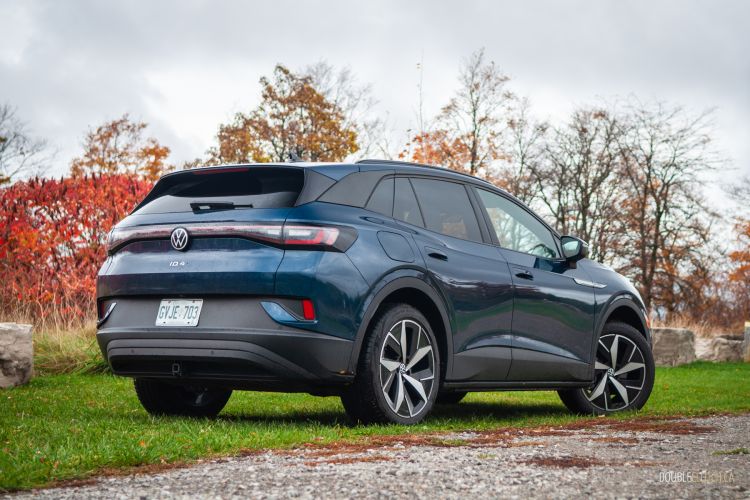
Beyond the beans, the ID.4 is commendably quiet and comfortable. There’s little in the way of a space-age soundtrack; instead, upon flooring it, all you get is the distant, well-insulated whirr of the electric motors. The suspension strikes a surprisingly good balance between compliance and corner-carving; it soaks up bumps, rough pavement, and other imperfections relatively well considering the ID.4 rolls on 20-inch wheels. But it also holds a line surprisingly well with minimal body roll, should you decide to explore the ID.4’s limits on your favourite on-ramp, though it’s no GTI. Wind and road noise are both well-insulated, but if we had a bone to pick with the ID.4’s dynamics, it’s with its regenerative braking. You can pull off one-pedal driving with the ID.4, but it’s regen isn’t as strong as other EVs.
On range and charging, the ID.4 is competitive. We started our test with a full charge and the ID.4’s on-board trip computer estimating a 407-kilometre range. Some 326 kilometres later, we chickened out and plugged in at the office with 18 per cent (or 89 km) remaining, meaning we probably could’ve beaten the official numbers if we tried a little harder. VW officially says a 10-to-80-per-cent charge takes about 30 minutes on a Level 3 charger, or about seven and a half hours to full on a Level 2, which lines up with our experience at the office.
Inside, though not quite class-leading, the ID.4 feels roomy and spacious enough to be competitive. The ID.4 handily offers more headroom and legroom all around than the Subaru Solterra and Toyota bZ4x twins, and there’s a touch more space for your noggin up front than the EV6, but the Ioniq 5 remains the roomiest of the bunch. That said, the ID.4 offers the most cargo space of the bunch, at 858 litres with the seats up and 1,818 with them stowed.
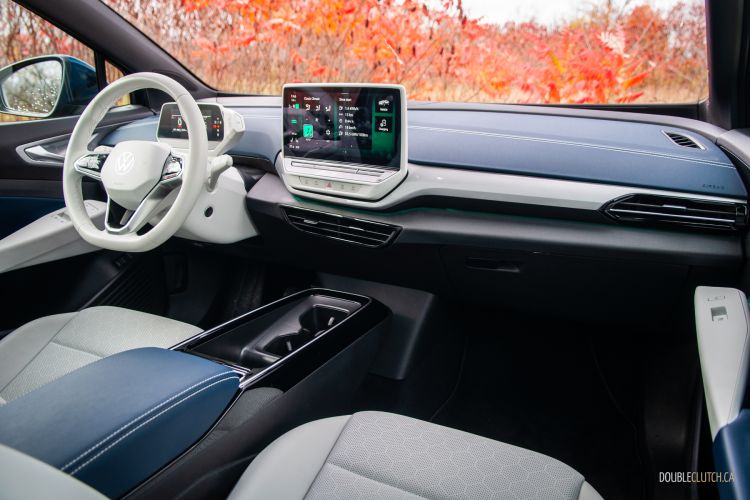
Beyond that, the ID.4’s cabin offers good fit-and-finish and feels airy, though we have a few nit-picks with the ergonomics. We like that the all-digital instrument cluster tilts and telescopes with the steering wheel, but the window switch arrangement — just two switches, plus a touch panel labelled ‘rear’ that alternates between the front and rear windows — is frustrating.
Equally frustrating is the touch panel handling infotainment and climate controls; we’ve bellyached about VW’s newest infotainment/centre stack arrangement, so we’ll give you the Coles Notes: the infotainment itself is intuitive enough if you’ve ever used a smartphone or tablet at any point in your life, but the temperature touch bars and volume slider below the 12-inch touchscreen should really be illuminated. It’s worth noting the Q4 E-Tron uses physical switchgear on the centre stack; opting for a base Q4 over a fully loaded ID.4 might actually be worth it for the ergonomics alone.
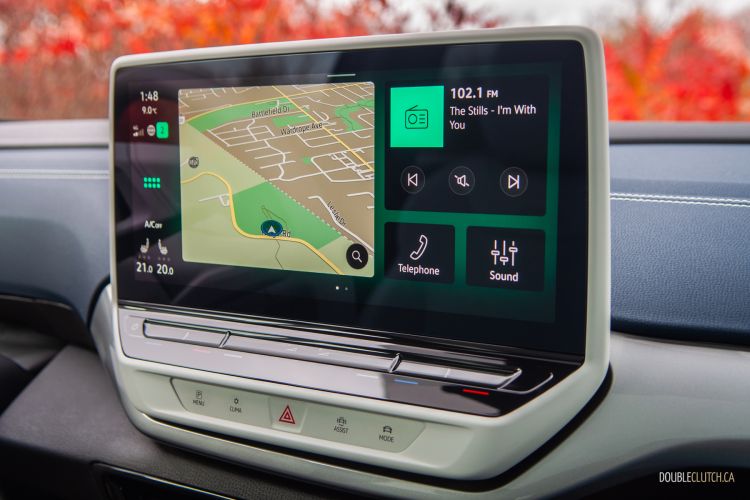
Price-wise, a base, rear-wheel-drive ID.4 starts at $46,495 before fees, taxes, and any EV rebates depending on where you live. Provided you can live with its 336-kilometre range and 201 horses, it’s decent value, coming standard with goodies like 19-inch wheels, LED lighting all around, heated seats and a heated windshield, wireless Apple CarPlay and Android Auto, and much more. Our particular tester, the Pro AWD trim, starts at a reasonable $55,495, but with nearly every option box ticked, topped out at not-cheap $61,945 as-tested.
Not too long ago, it seemed nearly impossible for “Volkswagen” and “EV” to appear in the same sentence, but even if it wasn’t for Dieselgate, change is inevitable. The ID.4 was a good first step into the world of electrification when it first launched; a few years later, the 2023 Volkswagen ID.4 remains competitive by offering good range, easy driving dynamics, and generous cargo space. Just make sure any passengers assigned to DJ duties don’t have to crank up the volume at night.

